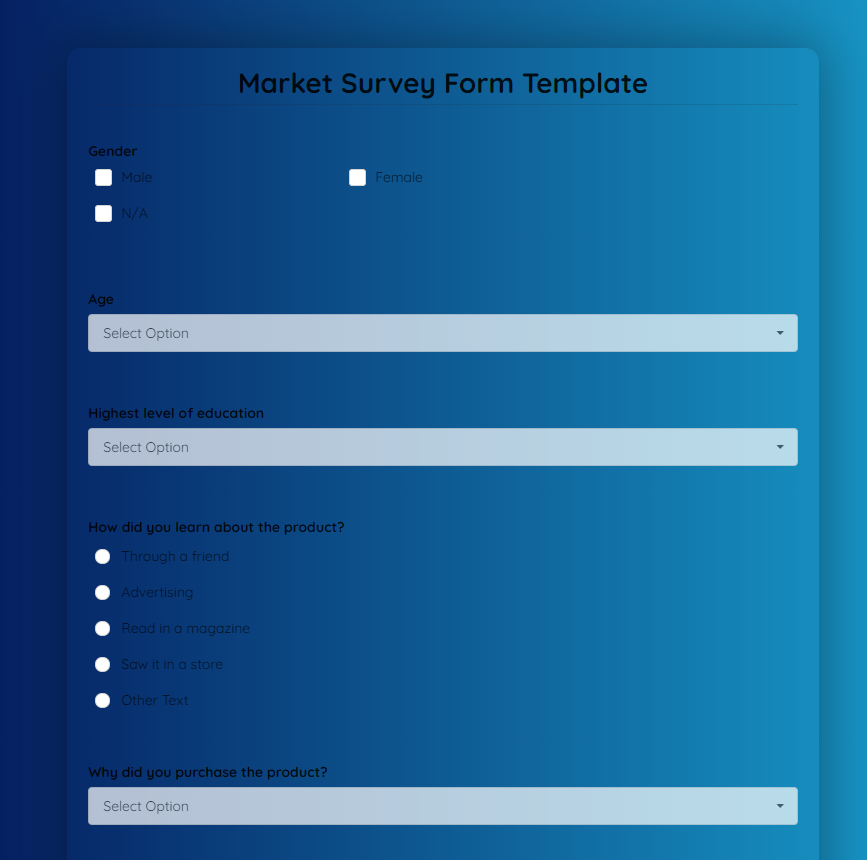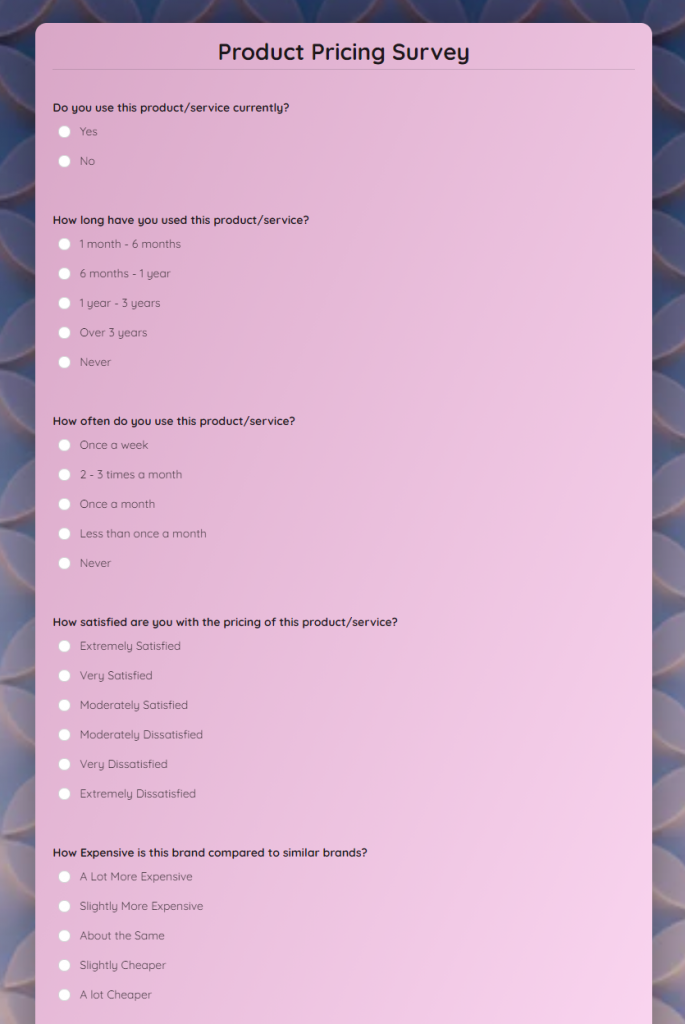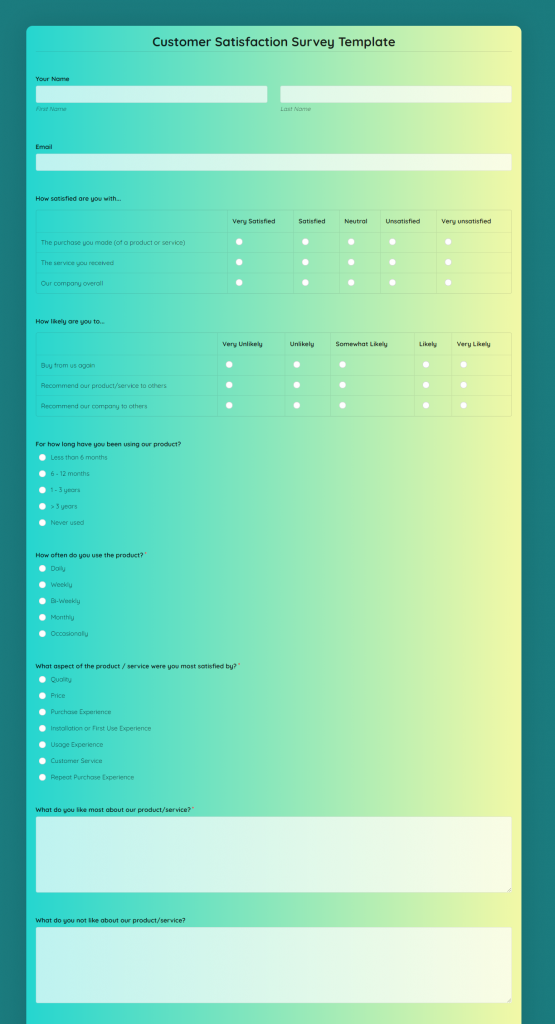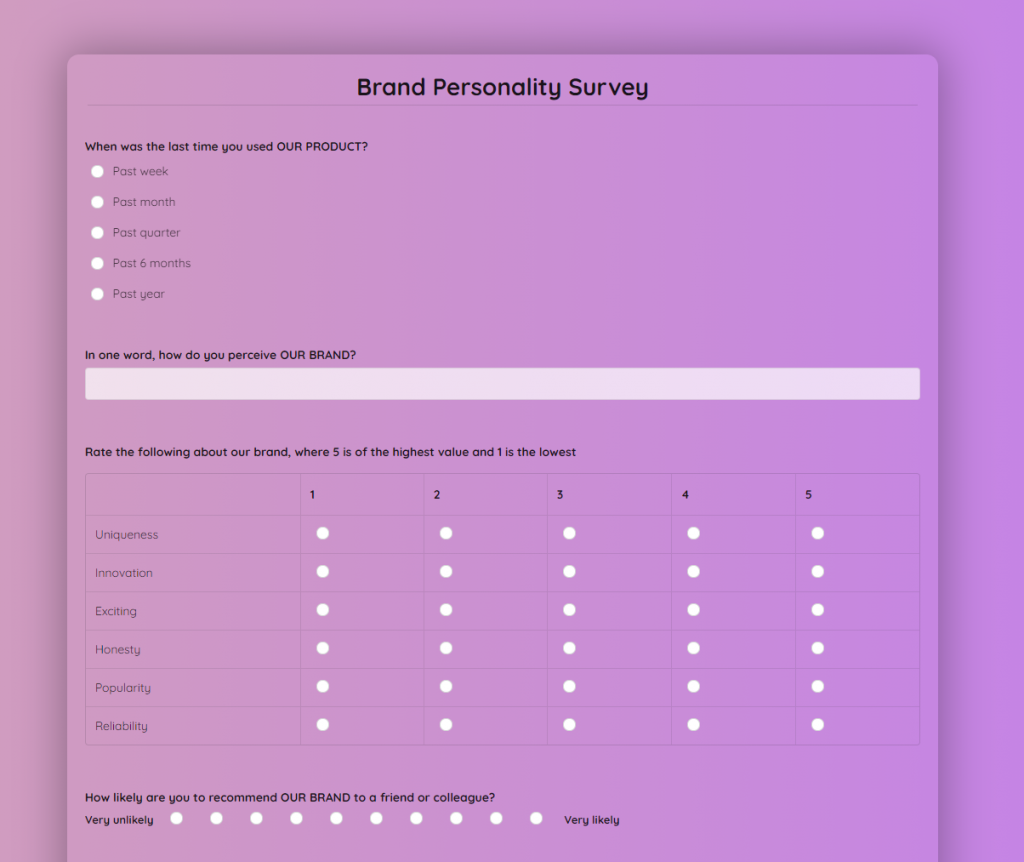To provide the best experience for your customers, you must strive to understand who they are, how they act, and what they want. One way organizations can do this is by carrying out behavioral segmentation for their target markets.
Behavioral segmentation works with other forms of market segmentation to help you meet the needs of your customers. Consumers' behavioral patterns give an insight into market needs and preferences, and organizations must take advantage of this information as they thrive to become household names in their industries.
What is Behavioral Segmentation?
Behavioral segmentation is the categorization target market based on behavioral patterns; that is, how they act as they interact with your organization. In behavioral segmentation, the organization pays attention to what consumers like and dislike, and their dispositions towards their product or service.
Interestingly, behavioral segmentation is intertwined with other forms of market segmentation. This is because consumer behaviors can be influenced by other factors such as their race, ethnicity, level of education, marital status, or employment status. For instance, a consumer may prefer shopping in person because he or she does not know how to use online payment platforms.
As a result of this intersectionality, behavioral segmentation helps organizations to validate the data collected through demographic segmentation. Understanding the behaviors of your users also helps you to take on more strategic marketing practices for increased revenue and profit.

Types of Behavioral Segmentation with Examples
Different criteria come into play when it comes to breaking up your market into segments based on consumers' behaviors. In line with this, behavioral segmentation can be subdivided into different types which will be considered in this section.
Behavioral Segmentation Based on Purchasing Behavior
This type of behavioral segmentation is concerned with how consumers act when making a purchase. It pays attention to consumers' dispositions as they go through the decision-making process until the moment when they complete a purchase.
A consumer's decision to purchase a product is usually the result or one or more factors. First, he or she may consider the difference in the features of the available options. For example, when deciding whether to buy a Dell or HP laptop, one may consider the functionalities of both laptops before making a decision.
Also, a customer may purchase one product over the other because he or she seeks variety; that is, something new for a change. This can happen in keenly contested industries that offer similar products with overlapping features like Fast-moving Consumer Goods industries (FMCGs).
Pricing is another important factor that influences consumers' purchasing behaviors. Customers will typically be drawn to products they can afford and this prompts them to choose one product over the other. Personal preferences and customer loyalty can also affect behaviors in purchasing.
Pros
- It helps you to understand what spurs your customers to purchase your product.
- It places the customer at the center of the purchasing cycle.
- Understanding the behaviors of your consumers means that you can create a product that appeals to them.
- It is useful in pricing evaluations and reviews.
- It helps you to identify any challenges customers experience when purchasing your product.
- It provides insights that help to simplify the purchasing process for your product.
Behavioral Segmentation Based on Benefits
Many times, customers buy your product because of the value it offers for them. Interestingly, what one customer finds valuable and beneficial may not be attractive to another customer. By breaking customers into groups based on what they find beneficial, you can cater to their needs easily.
Customers have different pain points and this is a major factor that dictates why they choose your product. One way to segment customers in terms of what they find beneficial or valuable is to group consumers based on each product feature.
Let's consider an organization that produces soap. In terms of the benefits of the product, there are multiple reasons a consumer may purchase soap; including laundry, skincare, body wash, or skin treatment. In some cases, consumers can derive new benefits from your product by adapting it to new uses.
Breaking your customers into segments based on the benefits they get from using your product makes your marketing strategy more intentional. This way, you can emphasize specific product features to the category of consumers that consider them valuable.
With this type of behavioral segmentation, you can avoid marketing mishaps like a soap brand emphasizing on skincare to a buyer who is interested in laundry.
Pros
- It is useful in product improvement.
- It helps you to identify the unique value proposition of your product from the market's perspective.
- It is time-efficient and cost-reducing.
Behavioral Segmentation Based on the Buyer's Journey
Here, the organization places the customers in groups based on the stages in the customer journey. Customer journey is a spectrum and placing consumers into different segments based on this, allows you to create unique marketing strategies to convert leads at every stage.
Also, this type of behavioral segmentation allows you to identify the unique challenges customers face with your product at different stages of the buyer journey. This allows you to develop actionable solutions that will help them connect with your brand and move from one stage to the other.
Many times, customers exhibit multiple behaviors that make it difficult for you to place them in a certain stage in the buyer journey. The hack to pulling this off is to consider the customer's behaviors across different points in the sales funnel and interpret these to find out where s/he is in the buyer journey.
Pros
- It is important in lead conversions.
- It helps you to create personalized experiences for your customers.
Behavioral Segmentation Based on Customer Engagement
Here, you break customers into categories based on how long and how often they (customers) interact with your product or service. Longer interaction time often suggests that customers see some sort of value in your product; that is, it meets a need for them.
Customers can be placed into 3 broad categories in line with this – occasional, regular, and intensive. Occasional customers are users who seldomly interact with your brand while regular customers are users who utilize your product frequently. Intensive customers see your product as an important part of their daily lives.
Different marketing strategies are used for each customer engagement stage. For occasional customers, you can conduct a survey to find out why they do not buy from you repeatedly and also try to create new and exciting offers for them.
In the case of regular customers, you can create marketing campaigns that emphasize different product features that will provide value for them. For example, you can run ads on the numerous uses and unique selling points for your product or service.
Since intensive customers are already loyal customers, you can focus on creating different reward systems for them such as gifts, vouchers, and discount offers.
Pros
- It helps reduce the churn rate and improve the sender's reputation for your product.
- It helps you to improve customer engagement.
Behavioral Segmentation Based on Timing
You can also place customers into behavioral segments based on when they are most likely to make use of your product or service. This is an occasion-based segmentation that deals with the time or season when a customer is more interested in engaging with a brand or receiving offers.
For instance, customers are more likely to party on a Friday because it ushers in the weekend. Also, hospitality businesses are more likely to experience a sales boom during the holidays because people have more time to travel.
There are universal occasions or seasons that are common to your target markets such as national and religious holidays like Christmas and Thanksgiving. Also, there are recurring personal occasions that can prompt a customer to make purchases such as wedding anniversaries and birthdays.
Customers may also engage in spontaneous one-time purchases due to certain occasions like a wedding or send forth.
Pros
- It helps you create effective marketing campaigns.
- It helps you to understand what drives your product sales at different times of the year.
How to Understand Behavioural Segmentation in Marketing
- Know your Audience
The first step in behavioral segmentation is to get familiar with your target market. You can do this by conducting user research, market research surveys, and customer surveys in order to gather useful data that provides insights into who your customers are.
Formplus has numerous survey templates that you can modify and make use of to gather data for behavioral segmentation. You can also create your behavioral segmentation survey from scratch in the form builder.
The Formplus form builder has a drag-and-drop feature that allows you to drag fields into your form. There are more than 30 different form fields available and this means that there is no limit to the kind of data you can collect.
- Work with Data
From your market survey and customer surveys, you should be able to gata insightful data about your target market and this is what should inform your behavioral segmentation. Formplus has an analytics dashboard that displays meaningful data collection insights and you can also use the report summary tool to generate custom reports from your form data.
- Create Your Buyer Persona
A buyer persona is a vivid description of your ideal customer. It highlights important behavioral and demographic information such as age, education, location, family size, income level, customer engagement, and timing.
You can create multiple buyer personas that are tailored to different aspects and features of your product. With this, you would be able to tailor your product to meet the needs of your target market.
- Understand the Buyer's Journey
Earlier in this article, we mentioned that customers can be placed in segments based on what point they are in the buyer's journey. It is important for you to create a spectrum for your buyer's journey and map out the different levels that comprise it.
You can also create a customer journey map for each of your buyer personas.
- Develop Behavioral Marketing Campaigns
Place customers into different behavioral segments and create targeted marketing campaigns for each one.
Top Form Templates for Behavioral Segmentation
- Market Research Survey: Use this market research survey to gather insights from your target market concerning consumer behaviors and preferences. This form would help you gather information on who your customers are and what they need.

- Product Pricing Survey: Use this product pricing form to find out what your customers think about the prices of your goods and services. This form would help you gather feedback on product pricing and you can use the data to develop a preferred pricing model for your product.

- Customer Satisfaction Survey: This form would help you to gather data bothering on what your customers think about your product and overall service delivery. You can edit this template in the drag-and-drop form builder to tailor it to your organization's needs.

- Customer Complaint Form: This form makes it easy for customers to communicate any challenges they face with your product across different levels of the buyer's journey. With this information, you would be able to resolve these issues and create a better customer experience for your users.
- Brand Personality Survey: Conduct a brand personality survey with this form to find out what consumers think about your product and organization. You can use this form to gauge the overall market popularity of your product and to also assess your brand image.

What Is The Difference Between Psychographic and Behavioral Segmentation?
Behavioral segmentation and psychographic segmentation are somewhat related and it's easy to get them mixed up. Understanding the differences between these 2 types of market segmentation would help you to better understand your target market.
The primary reason for this mix-up is that many persons interpret behavioral segmentation to mean "how customers behave." Behavioral segmentation is not just how customers behave rather, it is a customer's actions and dispositions as he or she interacts with your brand.
On the other hand, psychographic segmentation means the classification of customers in terms of their lifestyle, interests, values, and personality. In other words, it pays attention to who your customers are and connects this to why they may choose one product over another.
Psychographic segmentation variables include social class, hobbies, lifestyle choices, eating habits, and core values. On the other hand, behavioral segmentation variables include the benefits users get from your product, the degree of brand loyalty, customer engagement, user status, and usage rate.
For example, let's say your target market is primarily vegetarian. This lifestyle choice will automatically dictate the kind of food products they choose – they would prefer plant-based foods and avoid food items that contain meat.
Also, if your target market has no interest in charity, you may find it difficult to convince them to make a donation. These are a few scenarios where psychographic variables affect market behaviors and preferences.
In terms of behavioral segmentation, consumers may make a purchasing decision because it is a particular time in the year or because they are celebrating a special occasion. Also, consumers' behaviors evolve as they move from one stage to the other in the buyer's journey.
Importance of Behavioural Segmentation
- It helps you to target the right customers
Behavioural segmentation provides insights into the behavioral difference of your clients and you can leverage this information to create targeted campaigns for your diverse audience. For example, it helps you to create different market approaches for consumers are different stages of the buyer journey.
- It Improves Customer Experience
Because you know who your customers are and what drives their decisions, behavior-wise, you would be able to create unique consumer experiences that appeal to them. For instance, instead of intensifying marketing efforts for your intensive customers, you can focus on creating different rewards and gifts for them.
- It is Cost-Effective
Behavioral segmentation helps you to utilize organizational resources effectively. You would know what different behavior segments need and you would be able to strategically channel your resources to fulfill these needs.
- It establishes patterns for consumers' behaviors and this plays a crucial role in market prediction and prioritization.
- With behavioral segmentation, you are better equipped to discover new opportunities in the buyer's journey.
- It provides unique insights into the value of different customer groups for your business. You would understand what motivates customers to choose your product over others.
- Behavioral segmentation plays a crucial role in the development of smart marketing strategies to expand your customer base.
Conclusion
When done correctly, behavioral segmentation can trigger a new phase of limitless market possibilities for your organization. With behavioral segmentation, you will be able to create the right marketing strategies for your product and become a household name in your industry.
In this article, we've shared the different types of behavioral segmentation with specific examples that cut across different industries. To help you seamlessly categorize your customer base into different segments, Formplus provides different forms and surveys for behavioral segmentation.
Sign up for a Formplus account here to get started.